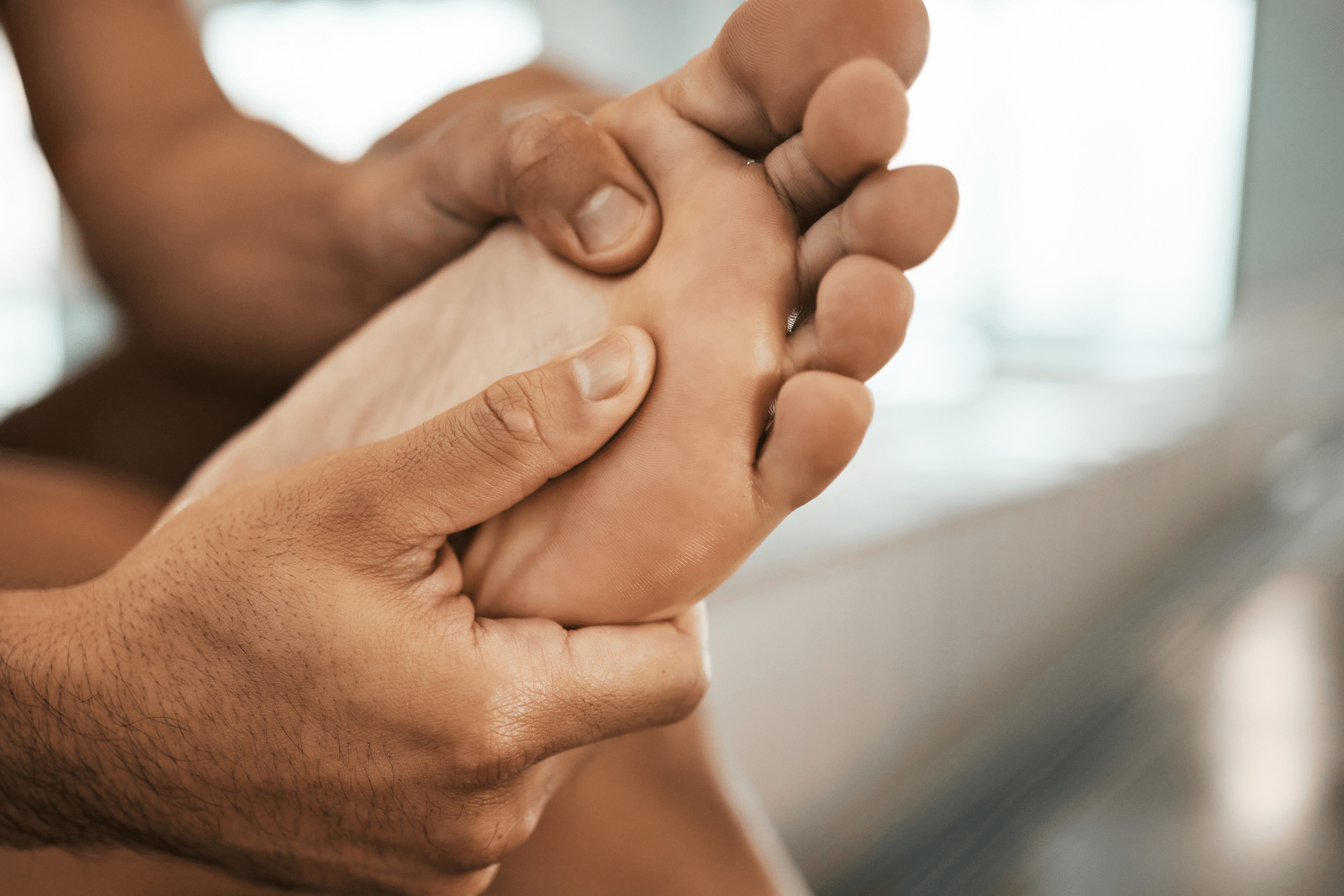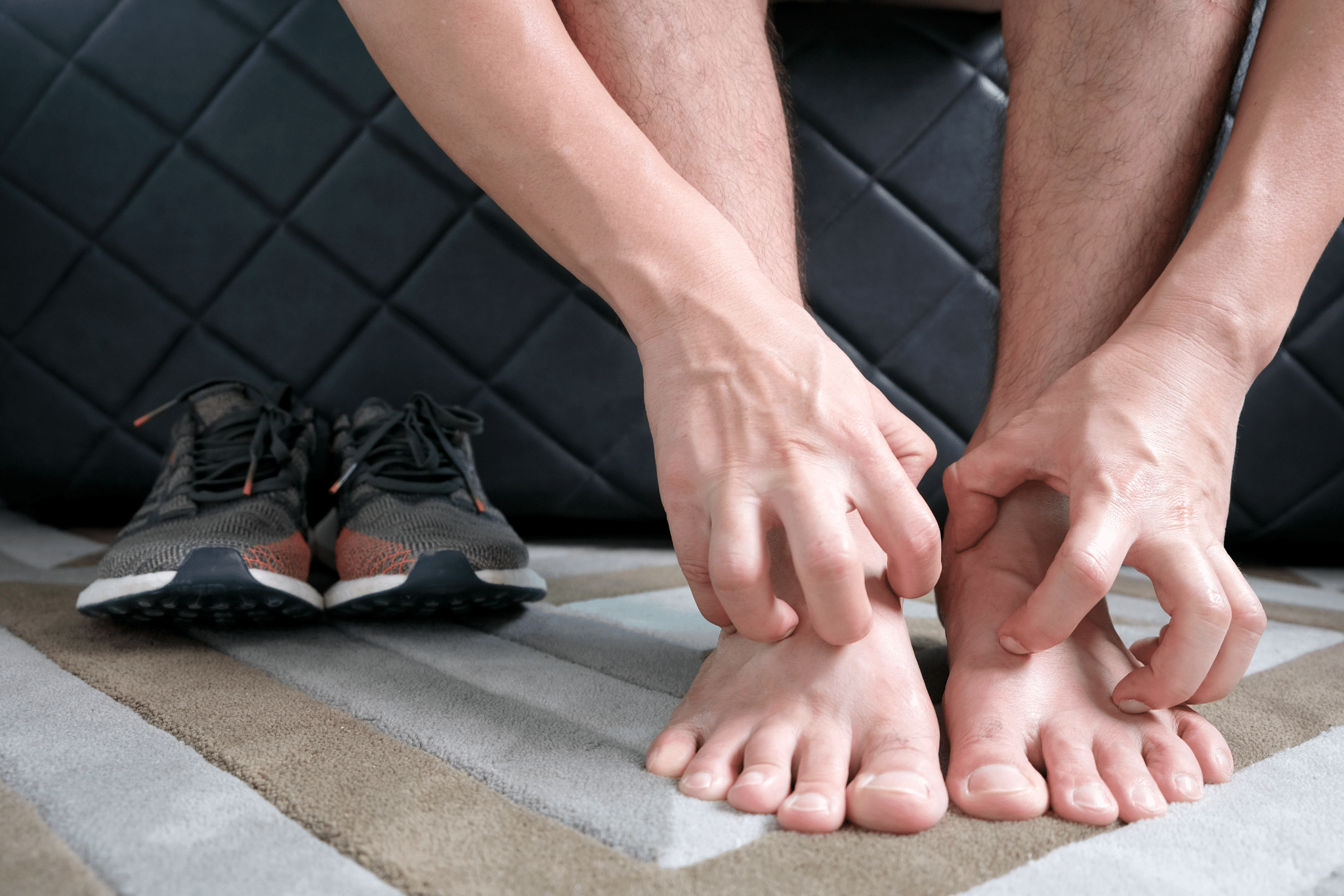Athlete’s Foot (Which sports see it the most?)
What is Athlete’s Foot?
Athlete’s foot is a fungal infection caused by dermatophytes, a group of fungi that thrive in warm, moist environments. The infection typically affects the skin between the toes but can spread to the soles, sides of the feet, and even toenails. The fungi responsible for this infection include various species, most commonly Trichophyton rubrum and Trichophyton mentagrophytes.
Common Symptoms
The hallmark symptoms of athlete’s foot include intense itching, redness, and peeling skin. As the condition worsens, it can lead to blistering, cracking, and, in severe cases, pain and discomfort. Athlete’s foot can also cause a burning sensation, particularly when wearing shoes or socks for extended periods. These symptoms can be uncomfortable and, if left untreated, can lead to secondary bacterial infections.

Causes and Risk Factors
Athlete’s foot spreads through direct contact with contaminated surfaces or individuals. This means that environments like locker rooms, communal showers, and pool decks are common places where the infection can spread. The following are some of the primary risk factors that increase the likelihood of contracting athlete’s foot:
- Warm and Moist Environments: Fungi thrive in warm, humid conditions. Environments where athletes sweat or where moisture accumulates, such as shoes and socks, are prime areas for fungal growth.
- Sharing Personal Items: Sharing footwear, socks, or towels can spread the infection. Athletes should avoid sharing these items to prevent the spread of fungi.
- Compromised Immune System: A weakened immune system can make individuals more susceptible to infections, including athlete’s foot.
- Excessive Sweating: Hyperhidrosis, or excessive sweating, can create a moist environment that encourages fungal growth. This condition is particularly common among athletes who engage in intense physical activity.
Prevalence of Athlete’s Foot in Sports
Athlete’s foot is prevalent in various sports, primarily because athletes often share communal facilities and wear footwear for extended periods. Here are some of the sports where athlete’s foot is commonly seen:
Soccer
Soccer players are at high risk of athlete’s foot due to several factors. Cleats are typically worn for long periods during practice and games, creating a warm and moist environment that encourages fungal growth. Additionally, communal showers and locker rooms increase the risk of spreading the infection. Soccer players may experience symptoms like itching, redness, and peeling skin, which can affect their performance on the field.
Basketball
Basketball players face similar risks due to the extended periods of wearing sneakers and high levels of sweating during games and practices. Close contact with other players and shared facilities can lead to the spread of athlete’s foot. If not treated promptly, the infection can affect a player’s ability to move comfortably on the court, impacting their performance.
Running and Track
Runners and track athletes are susceptible to athlete’s foot due to the friction caused by running and the sweat generated during intense workouts. Tight-fitting shoes and socks can create an environment where fungi can thrive. Proper foot hygiene and airing out footwear are essential for runners to avoid athlete’s foot.
Swimming
Swimmers are at risk because of the damp communal areas like locker rooms and pool decks. Walking barefoot in these areas can lead to infection, as fungi can live on these surfaces. Swimmers should always wear flip-flops or water shoes in public showers and changing areas to prevent contracting athlete’s foot.
Wrestling
Wrestlers are among the most vulnerable athletes to athlete’s foot due to the close skin-to-skin contact and shared mats used in the sport. The risk of spreading athlete’s foot is significant in wrestling environments, making it crucial for wrestlers to practice proper hygiene and ensure mats are cleaned regularly to minimize the risk of infection.
Diagnosis and Treatment
Diagnosing athlete’s foot typically involves a physical examination by a healthcare professional. In some cases, a skin test may be performed to identify the specific fungal organism causing the infection.
Once diagnosed, athlete’s foot can be treated with over-the-counter antifungal medications, including creams, powders, and sprays. These treatments are generally effective for mild to moderate cases.
For severe or persistent cases, prescription-strength antifungal medications may be necessary. These can include oral antifungal drugs or stronger topical treatments.
In addition to medication, proper foot hygiene and lifestyle modifications are critical for managing and preventing athlete’s foot. This includes washing and drying the feet thoroughly, changing socks frequently, and allowing footwear to dry completely before wearing them again.

Prevention Strategies
To prevent athlete’s foot in sports settings, athletes should follow these strategies:
- Wear Moisture-Wicking Socks: These socks help keep the feet dry by wicking moisture away from the skin, reducing the risk of fungal growth.
- Air Out Footwear: Allow shoes to dry completely between uses to prevent moisture buildup.
- Regular Foot Inspections: Athletes should check their feet regularly for signs of infection and treat any symptoms promptly.
- Use Antifungal Powders: Applying antifungal powders in shoes and on feet can help prevent infection.
- Avoid Sharing Personal Items: Athletes should avoid sharing shoes, socks, or towels with others to prevent the spread of infection.
- Practice Proper Hygiene: Regularly washing and drying the feet, especially after sports activities, is crucial to prevent athlete’s foot.
- Wear Flip-Flops in Communal Areas: This can prevent direct contact with contaminated surfaces in locker rooms and showers.
Athletes should take proactive steps to prevent and manage athlete’s foot. If symptoms persist or become severe, it’s crucial to contact our experienced team. Proper diagnosis and treatment can prevent complications and ensure a swift recovery. If you’re experiencing symptoms of athlete’s foot, don’t hesitate to schedule an appointment today.
